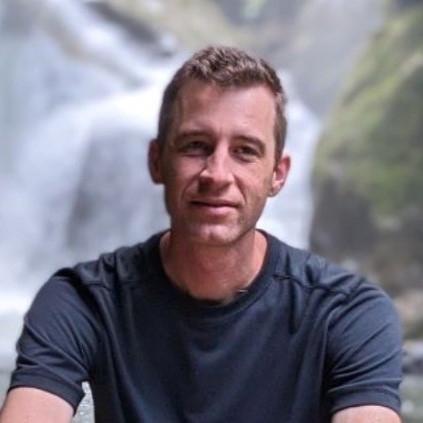South America, Under Construction: Anecdotes of Progress
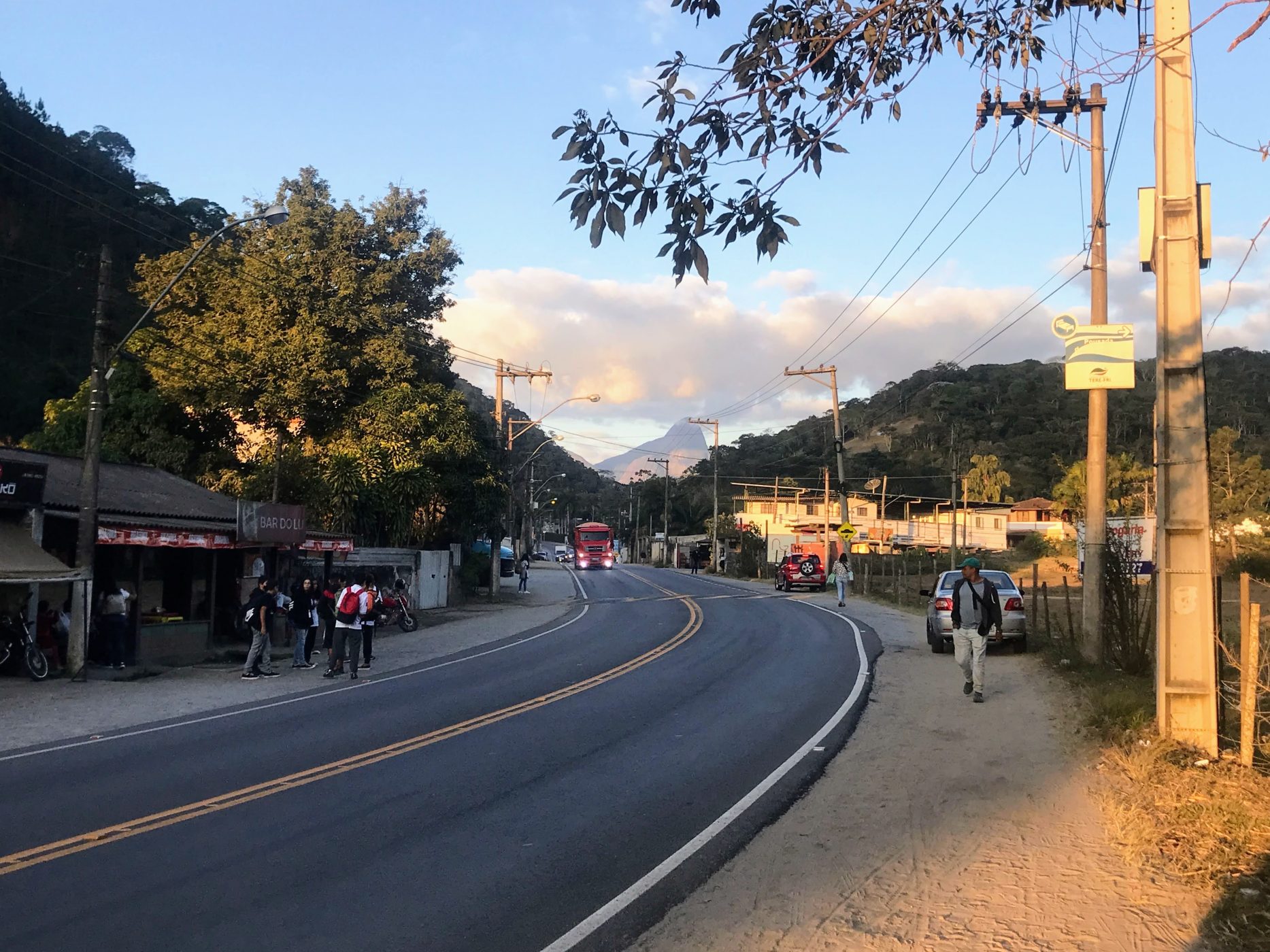
Originally published in the May 2024 edition of the newsletter.
In a small cabin several feet from a rushing stream, tucked away in an idyllic forest with fronds and hanging vines, we were panicking. The Wi-Fi stopped working. Hours later, it was clear it wasn’t coming back soon.
Disgruntled, we called our Airbnb host. He didn’t know when it would be restored, but hopefully soon. He claimed this was not typical, the roadwork was to blame.
It was the second month on our year-long sabbatical. We were going to start working remotely after a glorious month of doing nothing. But now we worried that our co-workers back home would think we weren’t up to the task.
We solved our problem in the end by booking another Airbnb in Paraty, the seaside town nearby. Surely, service would be more reliable there. (We had to drive into town and get Wi-Fi at a coffee shop in order to even make the booking). And so we wound up with an “office” away from home, which was really just a room at a family run bed and breakfast on the edge of town. For just $19 a day, it was a steal.
Coming home from the office one day, I caught my first glimpse of the transformation taking place.
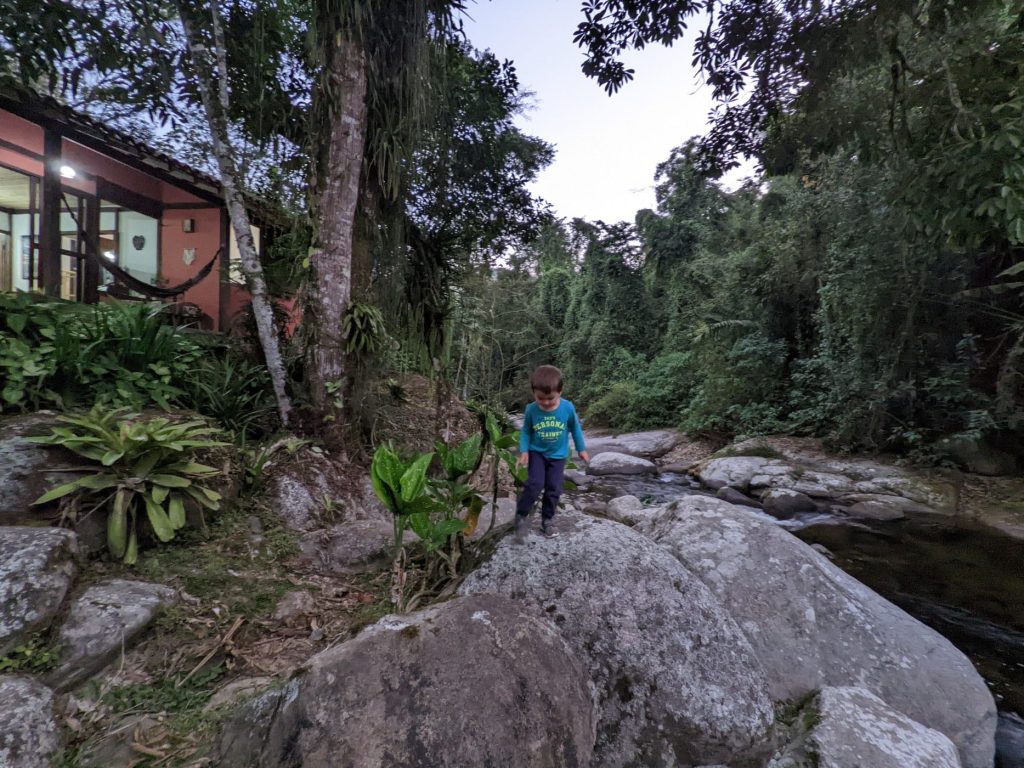
Rush Hour?!?
The drive home from the “office” usually took 15 minutes. At the edge of town, there was a big traffic circle that served as a junction for the regional highways. Then, a stretch of flat paved road with bike lanes heading toward the mountains, narrowing and degrading with each mile. A one lane bridge with a traffic light marked the halfway point. When the light turned green I cautiously made the blind turn onto the wooden bridge hoping not to find myself playing chicken with a motorcycle.
After a brief patch of mud and craters, I punched the accelerator on a stretch of brand new pavement before it was back to crawling over mud and craters again. Finally, just before a second one-lane wooden bridge was our cabin.
One evening, on my drive home from the office, the traffic stopped moving even before we got to the first bridge. Cars and trucks inched along while motorcycles zipped by along the edges, unencumbered. Strange. This is not the kind of place you would expect rush hour. One by one, the cars and trucks in front of me peeled off as they reached their destinations.
Finally, the culprit was revealed. A semi driving backward?!?
Attached to the backward semi was an enormous concrete beam. At the far end was another tractor trailer pulling forward.
It quickly became clear the absurdity of what I was witnessing. A concrete beam, half the length of a city block, was snaking and maneuvering over narrow unpaved roads, hairpin turns, and rickety wooden bridges.
Before I could get to my own driveway, the procession stopped. As it turned out, the little wooden bridge next to our cabin was the new home for this behemoth trunk of concrete and steel. With construction activity blocking the road, I had to park on the street and walk the rest of the way.
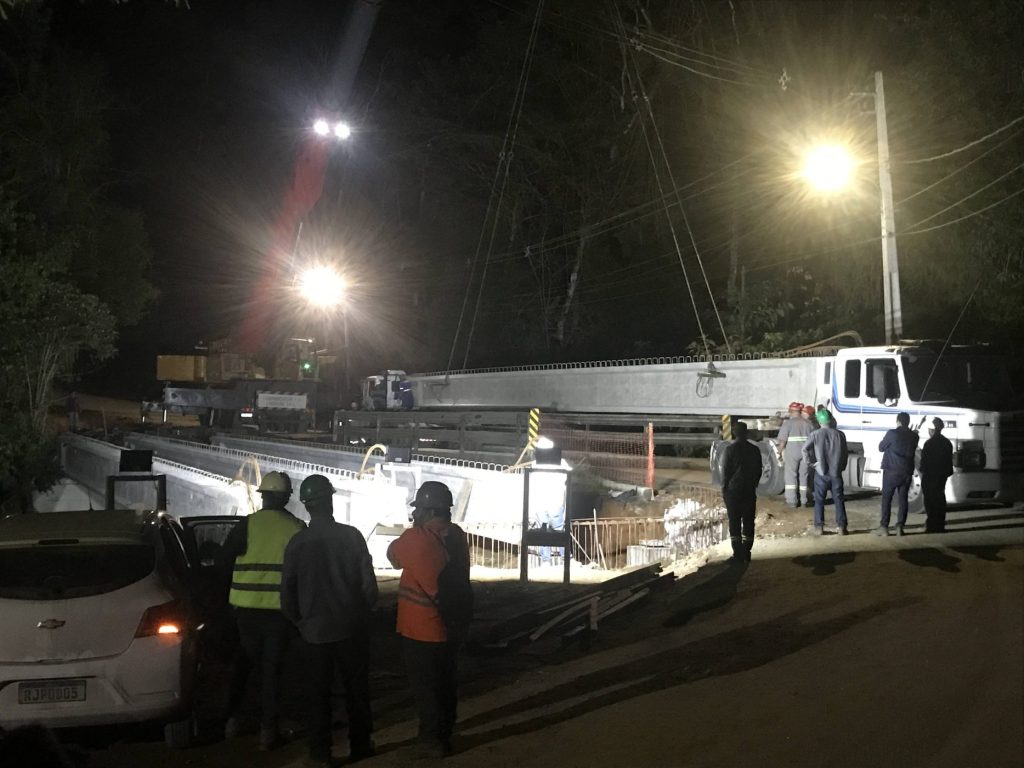
Signs of Progress
By the time our month at the river cabin ended, we were able to leave on fresh asphalt, zipping along several times faster than when we first arrived.
Seeing roads transform right under our noses was not a unique experience on our South American journey. For our first month, we stayed in Teresópolis, a mountain town outside of Rio de Janeiro. The two lane highway between Teresópolis and Nova Friburgo further to the east (the Tere-Fri, as they called it) was bumpy, narrow and potholed. Four months later, we left Eco Caminhos permaculture farm near Nova Friburgo, gliding back to Rio on smooth, fresh asphalt.
The same happened in Costa Rica. Within our ten day stay, the road between the beach towns of Nosara and Garza went from washed out and cratered gravel to black tarmac perfection.
Same in Colombia. Our bus glided over fresh highways and newly blasted tunnels between Bogotá and Cali.
Even the WiFi seemed like a miracle. Just five years ago, we visited Colombia for a two week vacation, and I recall waiting several minutes for an email to leave the outbox.
Though we experienced some disruptions in Paraty, the internet (when it worked) was adequate. It was fast enough to hold weekly half hour video conference calls and work on a computer in Chicago through a remote connection.
Lest you think I’m making an unfair comparison between two towns in two different countries, I’ll have you know that we revisited Salento, Colombia—where five years ago it took several minutes to send a few lines of text—and now the internet is great there too! We streamed music, used our mobile apps, and tried out the AI image generators that were just coming out for the first time.
Speaking of milestones on the road to human flourishing, I can’t leave out the topic of coffee. Before our gap year, we visited Colombia twice, in 2013 and 2018. We took various coffee tours. The irony, our guides never failed to mention, was that the coffee in Colombia was pure crap, despite its sterling reputation abroad. The best beans were exported to places like the United States while Colombian farmers had to pinch their noses and drink the stuff that didn’t pass quality control.
For the first six weeks of our gap year—time I will never get back—I drank grocery store coffee just to stave off withdrawal. That’s because I assumed, wrongly, that fresh roasted coffee was too much to ask, and so I didn’t bother to look. Then I found out, to my utter delight, that fresh roasted coffee is now a thing everywhere! In every country we visited!
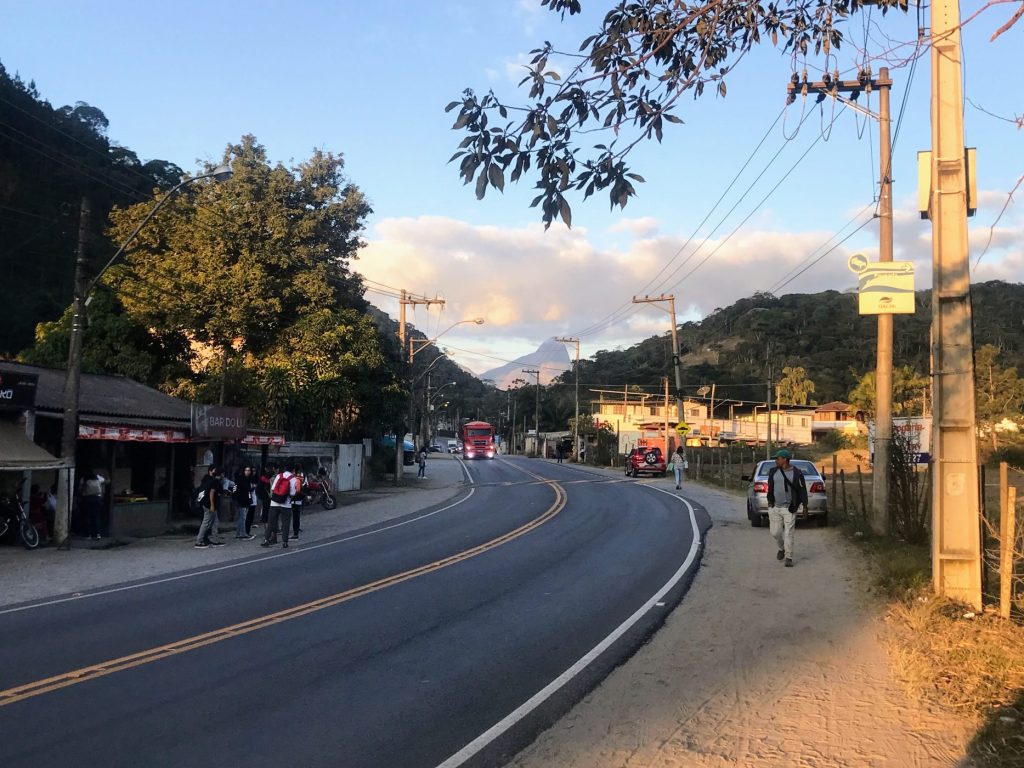
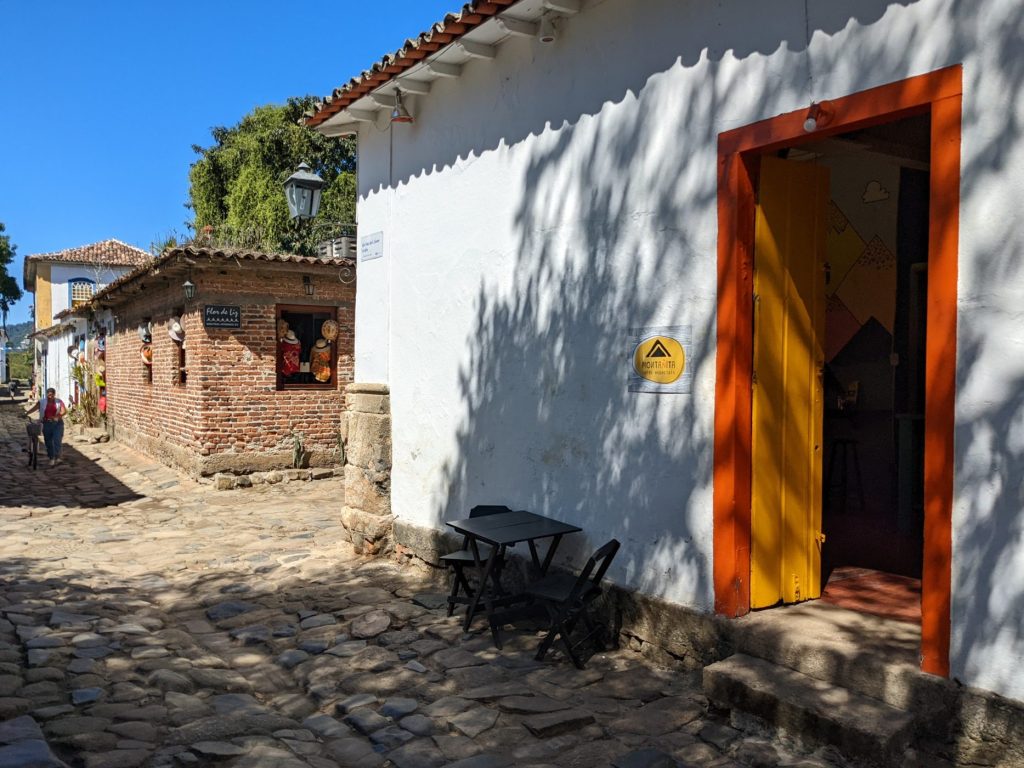
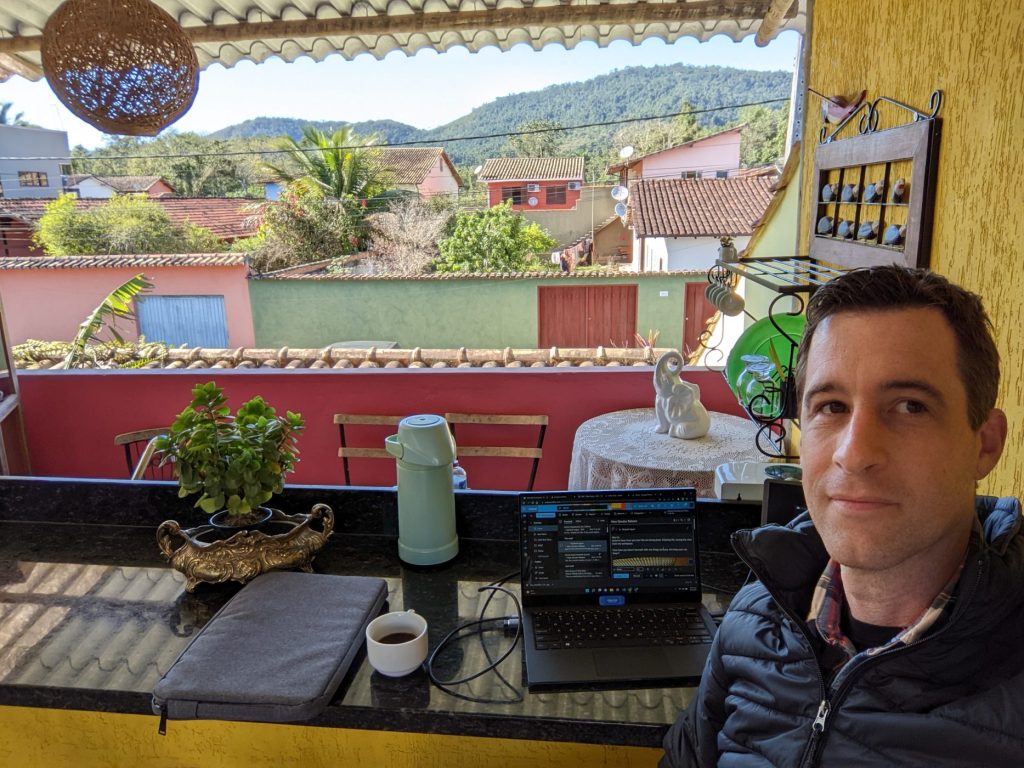
Times Are Changing
“What you learn about the world at school will become outdated within 10 or 20 years of graduating,” wrote Swedish academic Hans Rosling. That idea fueled my curiosity ever since Liuan and I listened to Rosling’s book Factfulness on audio book. How much of the world is no longer what I think it is?
Growing up an evangelical Christian, my sole source of information about South American came from stories about missionaries. The ones I remember served in the Amazon regions of Ecuador, Colombia and Venezuela. They flew in on single propeller airplanes and landed on makeshift airstrips in remote jungle clearings. Those stories were what first got me hooked on travel.
And those were the images swimming around in my mind as we planned our three-week road trip around Ecuador. As I researched on Google Maps, I spotted a highway going into the Amazon (in Ecuador, the region is known as El Oriente).
My curiosity was stoked. I really wanted to drive over there, but I doubted it was advisable. Maybe it was just a dirt track with narcos waiting to ambush anyone dumb enough to drive that way. So I asked a friend who grew up in Ecuador.
What you learn about the world at school will become outdated within 10 or 20 years of graduating.
Hans Rosling, Factfulness: Ten Reasons We’re Wrong About the World–and Why Things Are Better Than You Think
His answer? Yes you can. In fact, he highly recommended it. He also reminisced about what it was like before that new highway was built. Apparently, it was rough ride in the not too distant past. Add one more recent development to the list.
When we experienced it in person, our ideas about the “Ecuadorian jungle” were flipped on their heads. The drive out to Puerto Misahuallí on the Napo River was as easy as driving to a tourist town in Wisconsin. The towns had both local and foreign cuisine and, once again, good coffee. Everything was modern and easy. Almost disappointingly so.
To see the “real” jungle we took a boat down river and docked at a secluded, tree-shrouded cluster of huts where we stayed overnight. We took night tours through the jungle, where every brush of a vine felt like a tarantula falling on my neck.
But the next day our illusions of wilderness living were shattered. Our hosts discussed options for the return trip. We could take the boat back, but it took way more fuel to navigate upstream. It wouldn’t be cheap. Or we could just take the bus back. (What, a bus? In the middle of the jungle? How?)
Our host led us on ten minute hike down a gravel driveway. And there we were catching a bus in a village surrounded by treeless farmland. The remote hideaway felt like a charade.
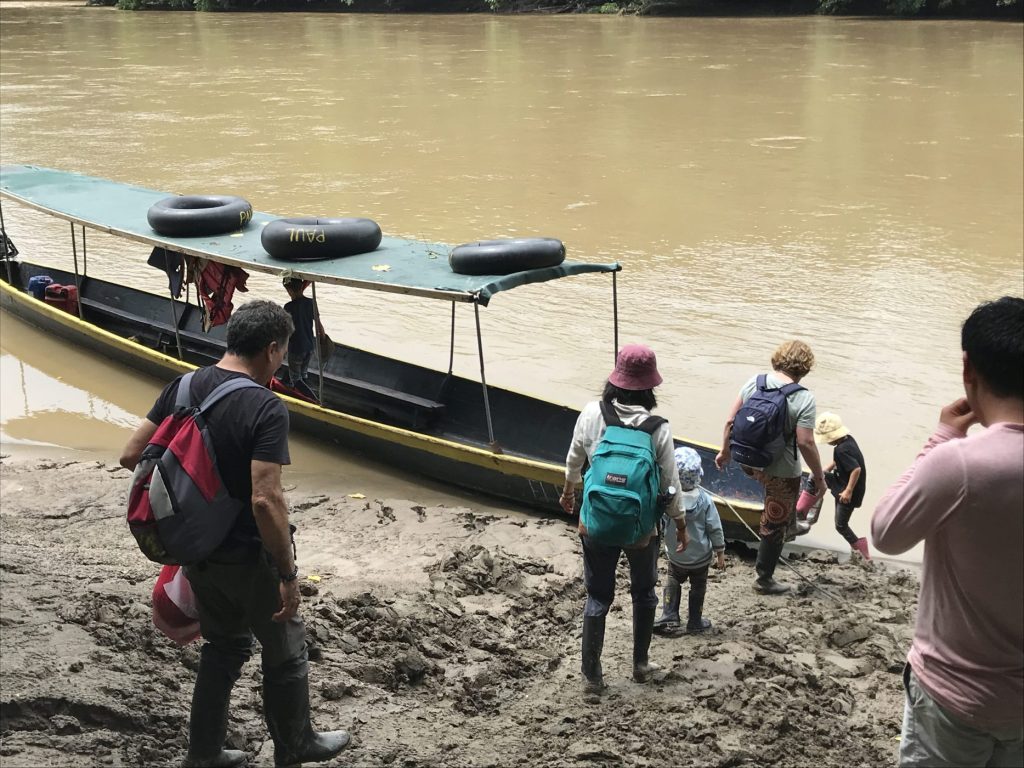
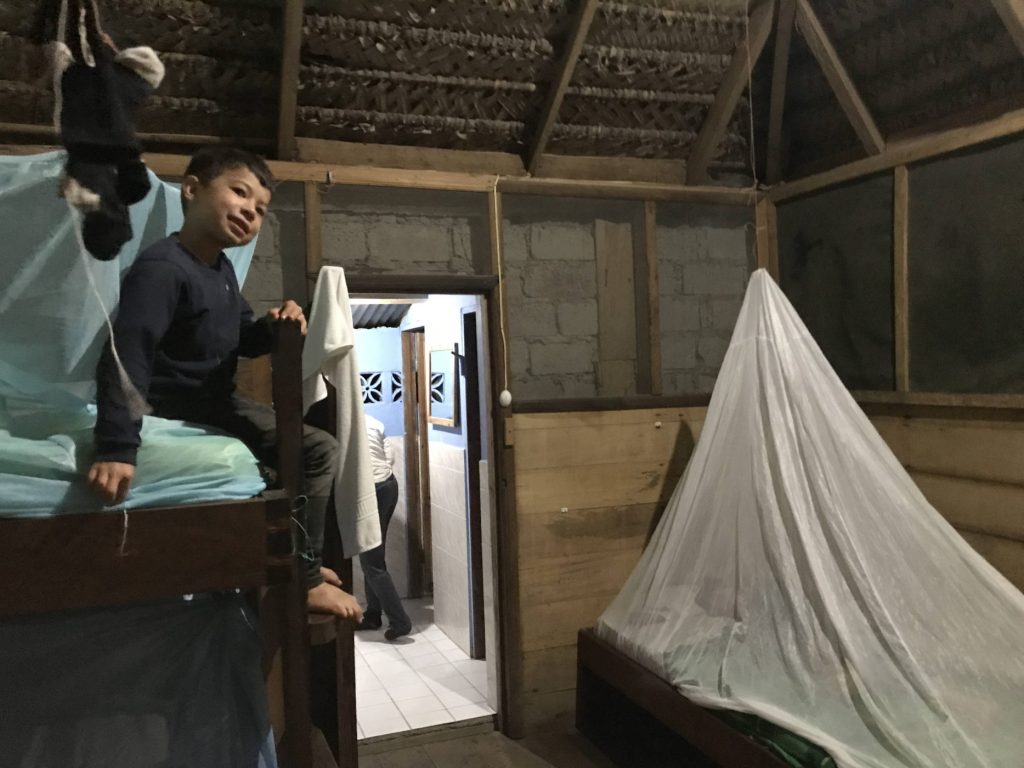
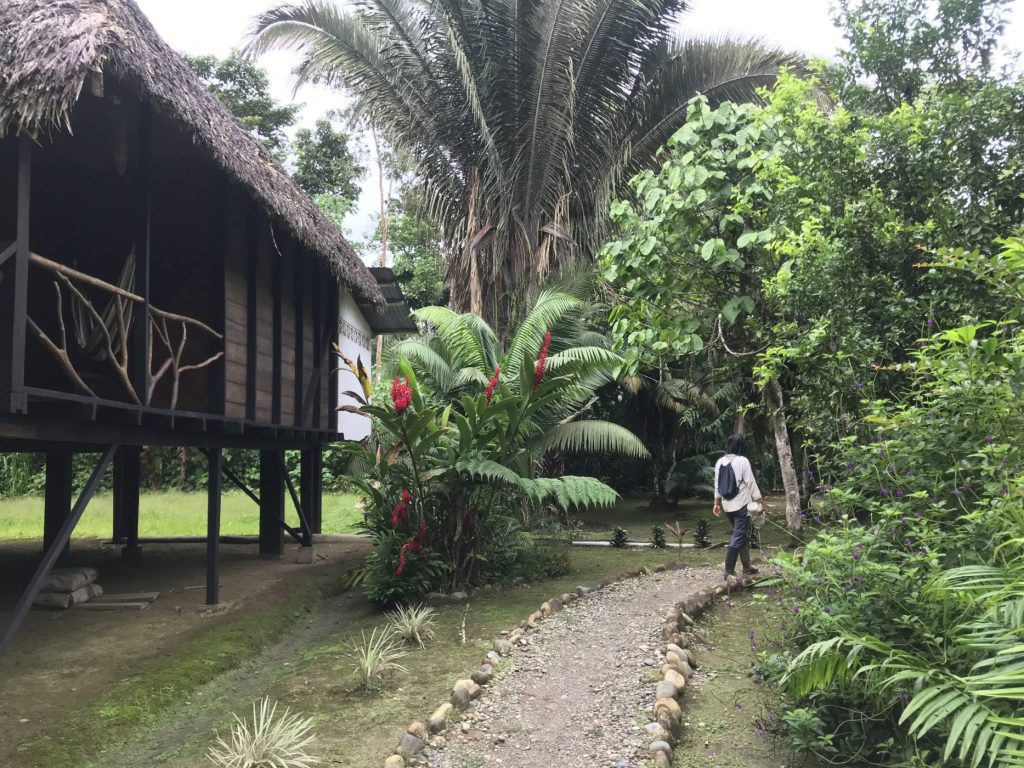
A Feature or a Bug?
Practically overnight, potholed and washed out roads are becoming paved highways. Barely usable internet connections are upgraded to support video streaming. But not everybody thinks these improvements are for the better. The owner of our hotel in Puerto Misahuallí, who also sent us on the overnight excursion, compared the new roads to a cancer.
The land that the road occupies is only the beginning of the destruction of natural habitat. With the convenience of a road come more people. They strip the jungle bare to grow crops, where the road makes it easy to bring their goods to market. More tourists arrive to this newly accessible “untouched wilderness.” They generate a market for hotels, restaurants, fresh-roasted coffee shops and “remote” experiences.
But, if not managed responsibly, tourism could sow the seeds of its own demise. After all, visitors are lured by the unsullied Eden they imagine the Amazon to be. What happens when it is no longer possible to aim your camera without a luxury hotel showing up in the frame?
For locals and visitors alike, a new convenient road can spell the end of a place’s character. It’s the unfortunate paradox of tourism that what draws people—the place’s unique culture or natural beauty—gets eroded or snuffed out completely by their presence.
Not that I should complain. Recent improvements allowed us to visit places we could never have dreamed of going decades ago. Not with a cheap rental car anyways. And who can begrudge the locals their newfound ease in transporting goods, getting to the hospital, and in some cases, even ordering something from Amazon (the company, not the rainforest).
For better or for worse, it serves as a reminder that the world is constantly changing. Despite our best efforts to describe the places we visit with accuracy on our blog, you can bet that in ten years or less it will be obsolete.
If you ever travel South America, you’ll find it a different place than we left it. Don’t get me wrong, there will still be plenty of washed out dirt roads to lose yourself on, if that’s your thing. But visitors will find it increasingly easy to work, travel, and come by conveniences that were once unthinkable.


